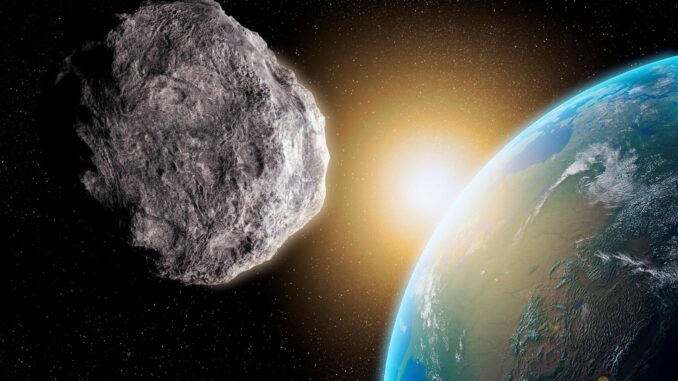
NASA scientists have warned that Earth could be at a much higher risk of asteroid impact than previously believed.
The warning comes from James Garvin, the Goddard Space Flight Center Chief Scientist, who believes that four asteroids strong enough to blow off part of the Earth’s atmosphere, have hit in the past one million years.

BYPASS THE CENSORS
Sign up to get unfiltered news delivered straight to your inbox.
You can unsubscribe any time. By subscribing you agree to our Terms of Use
Latest Video
The chief scientist and his team think that estimates have the potential of being way off and that what’s possibly coming “would be in the range of serious crap happening.”
Giant space rocks are predicted to strike only once every 600,000 to 7000,000 years.
The Mail Online reports: Garvin and his team analyzed data from several Earth-observing satellites to examine four impact craters and identified larger rings around the sites, determining previous work had misread their findings.
If the new data is correct, the impacts would equate to an explosion 10 times more powerful than the largest nuclear bomb in history, resulting in a mass extinction.
Garvin presented the findings at the Lunar and Planetary Science Conference last week, saying, ‘It would be in the range of serious crap happening.’
The team conducted the study as part of planetary defense research but uncovered more than they could have imagined.
Using new high-resolution imagery of four craters made over the past one million years, Gavin could map them in 3D.
The sites included Pantasma in Nicaragua, Bosumtwi in Ghana, Iturralde in Bolivia and Zhamanshin in Kazakhstan.
‘We have focused attention on four complex impact craters that span the past ~1.0 Ma [one million] of Earth history, mostly within tropical regions, with differing target rock characteristics,’ reads the presentation.
The documents describe the analysis of Pantasma, which was documented as a nine-mile-wide crater left by an asteroid some 800,000 years ago, and it produced the equivalent of 660,000 megatons when it fell to Earth.
Gavin’s reanalysis claims the crater is 21 miles wide, and the impact was equivalent to 727,000 megatons, enough to ‘blow off part of the Earth’s atmosphere and distribute impact glasses globally.’
‘Reanalysis of the Bosumtwi (Ghana) topography using the RPS method suggests an outermost rim of 26.8 km with an inner peak ring (with deep cavity within) of six miles, Gavin and his team wrote.
‘The perhaps more bizarre Zhamanshin impact feature in Kazakhstan reveals an outer putative rim at 18 miles,’ the team wrote while stating it was previously documented as being just seven miles.
The final site, Iturralde in Bolivia, was noted as being six miles wide, but the new data shows it is 18 miles.


